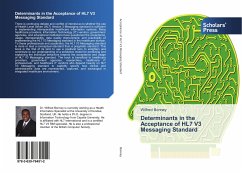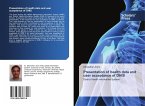There is continuing debate and conflict of interest as to whether the use of Health Level Seven (HL7) Version 3 Messaging standard is sufficient in implementing interoperable healthcare information systems. Many healthcare providers, Information Technology (IT) vendors, government agencies, and educational institutions have questioned the acceptance, usage, interoperability, data quality improvement, and practicality of implementing the HL7 V3 Messaging standard in the healthcare domain. To these professionals and academics, the HL7 V3 Messaging standard is more or less a conceptual standard than a pragmatic standard. This book is the first of its kind to use a positivist lens to enlighten and contribute to our understanding of a predictive model for predicting and explaining the individual behaviors towards the acceptance and usage of HL7 V3 Messaging standard. The book is beneficial to healthcare providers, government agencies, researchers, healthcare IT professionals, and healthcare IT vendors who depend heavily on HL7 V3 Messaging standard to explicitly specify how clinical and administrative data are represented, captured, and exchanged in integrated healthcare environment.







